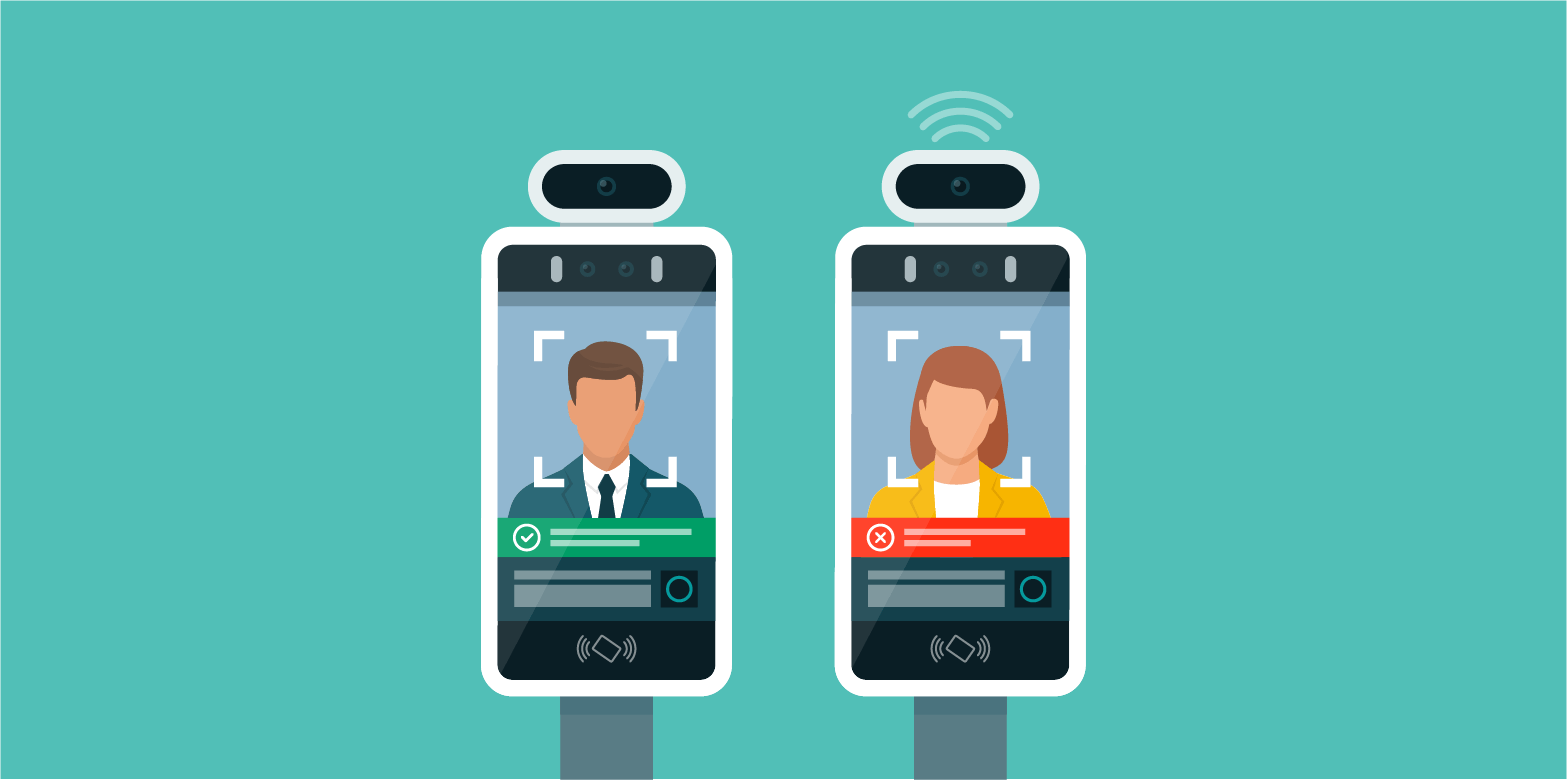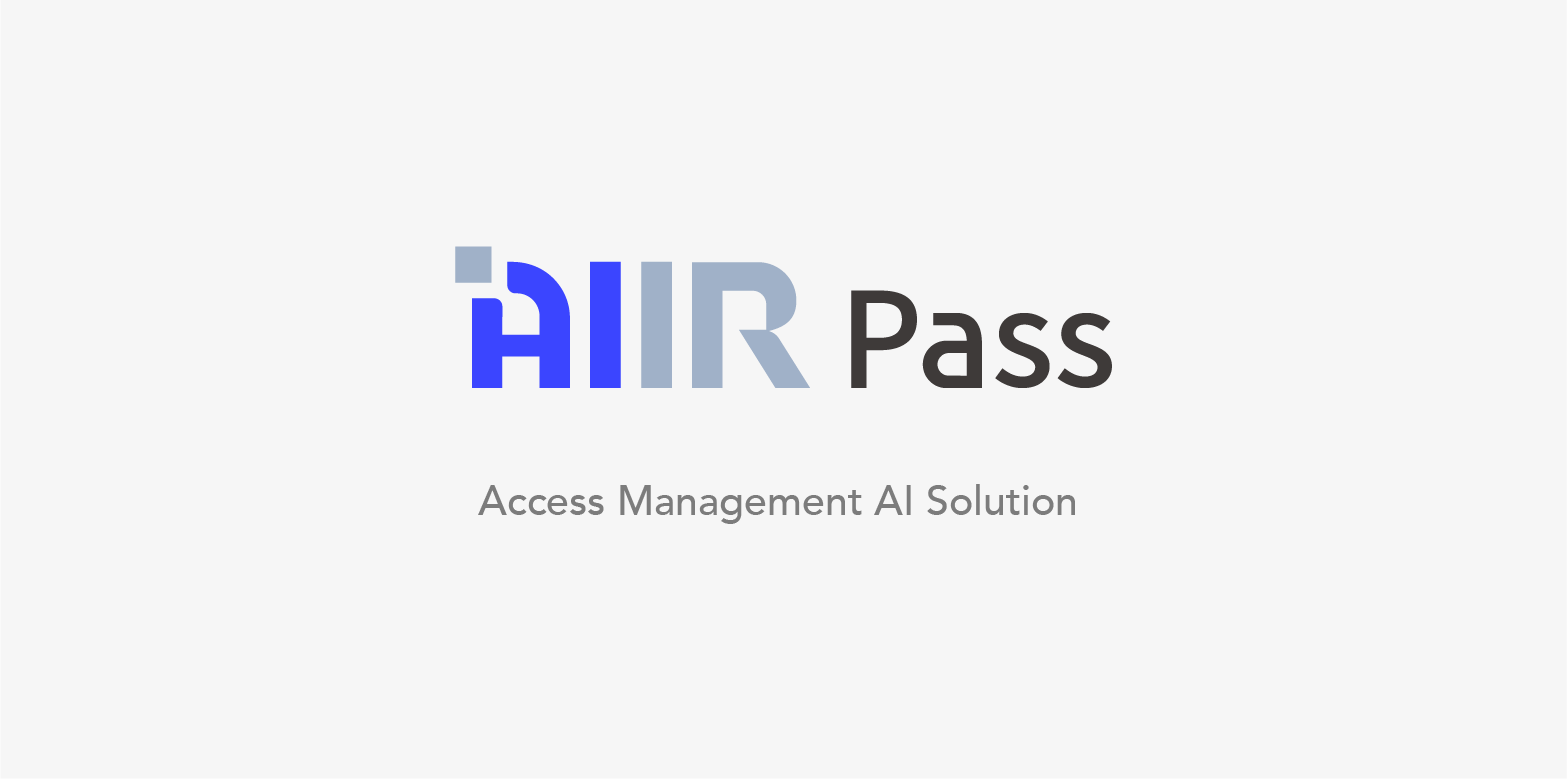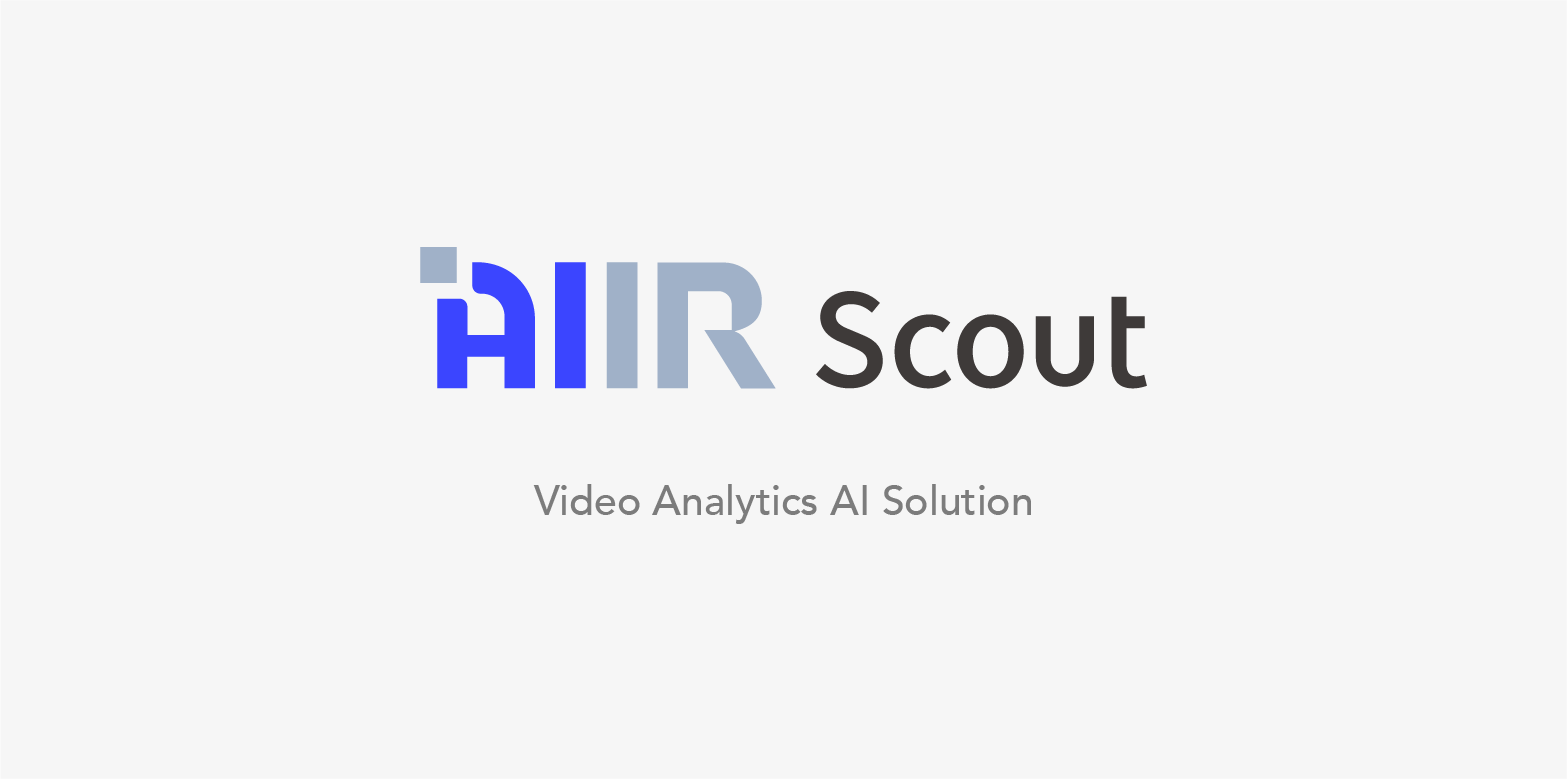Facial Recognition in the Workplace: Enhancing Employee Management and Safety
ALCHERA
August 24, 2023
August 24, 2023
Transforming Workplace Safety and Employee Attendance Management System with Facial Recognition
Table of Contents
Demystifying AI Facial Recognition Technology
- AI facial recognition technology's basic principles
- Role of AI and machine learning in enhancing facial recognition
- Application of AI facial recognition technology across various sectors
The Impact of AI Facial Recognition in the Workplace
- General uses of AI facial recognition technology in a workplace environment
- The pros and cons of utilizing AI facial recognition technology in the workplace
Potential Applications of AI Facial Recognition in the Workplace
- AI facial recognition for employee management
Real-World Examples of AI Facial Recognition in the Workplace: AIIR Scout and AIIR Pass by ALCHERA

As we delve into the era of digital transformation, AI facial recognition technology is increasingly taking center stage, especially within the corporate world. This technology presents exciting possibilities to reshape traditional management systems and enhance safety procedures within the workplace. Our goal in this blog post is to simplify the understanding of AI facial recognition technology, explore its practical implications in workplace scenarios, discuss the ethical considerations it encompasses, and forecast its role in shaping future workplaces.
Demystifying AI Facial Recognition Technology
Facial recognition technology is a unique blend of several disciplines, including computer science, mathematics, and cognitive sciences. It functions based on specific fundamental principles that empower it to carry out complex tasks effortlessly.
AI facial recognition technology's basic principles
The technology primarily functions by comparing various facial features from a given image with those stored in a database. It operates in a series of steps, starting with face detection, wherein the system identifies a face within an image. This is followed by feature extraction, wherein unique features such as the distance between the eyes or the shape of the chin are captured and converted into a numerical code known as a faceprint. The faceprint is then compared against the ones in the database to find a match, achieving recognition.
Role of AI and machine learning in enhancing facial recognition
Artificial Intelligence (AI) and Machine Learning (ML) play pivotal roles in enhancing the capabilities of AI facial recognition technology. With AI, the system can "learn" from its experiences and improve over time. Machine Learning, a subset of AI, uses algorithms to parse data, learn from it, then make an informed decision or prediction. In the case of AI facial recognition, ML algorithms help the system recognize patterns and improve its ability to match faceprints accurately.
Over the years, Deep Learning, another subset of machine learning, has been increasingly used in AI facial recognition technology. It uses artificial neural networks with several layers to carry out the process of learning, making the technology significantly more effective and accurate.
Application of AI facial recognition technology across various sectors
Facial recognition technology has seen widespread application across multiple sectors. In law enforcement and security, it's used for surveillance, identifying criminals, and enhancing security protocols. In retail, it aids in personalized marketing and customer service, recognizing VIP customers, and identifying potential shoplifters.
In healthcare, it's used for patient identification, ensuring the right patient receives the correct treatment. It is also used in diagnosing certain genetic conditions characterized by distinct facial features. In the travel and hospitality sector, it facilitates seamless check-ins and enhances customer experiences by speeding up boarding processes and accessing services.
Another sector that stands to gain significantly from this technology – and our focus in this post -- is the corporate world. AI facial recognition technology is being increasingly integrated into workplaces for a range of applications, from employee management to enhancing workplace safety, which we will explore further in the following sections.
By understanding the basics of AI facial recognition technology and acknowledging the crucial role AI and machine learning play in its operations, we can appreciate the vast potential it holds across various sectors. It is, however, critical to use this powerful tool responsibly and ethically, a topic that warrants further discussion.
The Impact of AI Facial Recognition in the Workplace

As AI facial recognition technology becomes more advanced and accessible, its application in the workplace continues to expand, introducing both significant benefits and noteworthy challenges.
General uses of AI facial recognition technology in a workplace environment
In the corporate environment, AI facial recognition technology is primarily used for employee management and workplace safety. It assists in maintaining accurate attendance records by identifying employees as they enter and leave. It also aids HR processes by facilitating quicker employee identification, streamlining the onboarding process, and expediting administrative tasks.
Moreover, AI facial recognition technology significantly enhances workplace security. It can provide controlled access to facilities, ensuring that only authorized personnel can enter specific areas. It can also help quickly identify any individuals who pose a potential safety risk, enhancing the overall safety of the organization.
The pros and cons of utilizing AI facial recognition technology in the workplace
Facial recognition technology comes with numerous benefits. Its ability to accurately identify individuals in real time makes it a powerful tool for both employee management and security purposes. It also eliminates the need for physical access cards or time sheets, making it a cost-effective solution in the long run.
However, the technology also has its drawbacks. Perhaps the most significant concern with AI facial recognition technology in the workplace revolves around privacy and ethics. Constant surveillance could make employees feel uncomfortable, leading to a perception of “Big Brother” watching. There's also the potential misuse of data, wherein personal information could be used for purposes beyond the original intent.
Employers must, therefore, tread carefully. Transparent policies should be established, clearly informing employees regarding how their data will be used and ensuring that it's used only for the purposes for which it was originally collected. Regulations and controls should be in place to protect this sensitive data from potential misuse or breaches.
Potential Applications of AI Facial Recognition in the Workplace
The transformative potential of AI facial recognition technology is evident in the workplace context, wherein its applications extend far beyond mere identification purposes. It is progressively reshaping both employee management systems and workplace safety and security protocols.
AI facial recognition for employee management
AI facial recognition for employee attendance management system and time tracking

In terms of employee management, one of the key areas where AI facial recognition technology can be deployed is the monitoring of attendance and time tracking. Conventional methods, like manual logging and electronic card swiping, are prone to errors, misuse, and occasionally, fraudulent activities such as “buddy punching.”
The introduction of AI facial recognition for employee attendance management systems eliminates these challenges by providing a foolproof method for attendance tracking. Employees can simply have their faces scanned as they arrive and leave the premises, with scans automatically logged into the system. This not only ensures accurate timekeeping, but also encourages a higher degree of accountability among employees, who know that their arrivals and departures are being precisely recorded. Over time, this accuracy and automation could lead to significant operational efficiency and cost savings for organizations.
AI facial recognition for improving HR processes and functions
Furthermore, AI facial recognition technology has a pivotal role to play in enhancing other HR functions. The onboarding of new employees, for example, becomes more efficient as their facial data can be captured, stored, and recognized for future reference. This application extends to access control, wherein employees can gain entry to different sections of the workplace, databases, and even digital systems without the need for manual entry, badges, or ID cards.
This degree of automation not only enhances the employee experience by reducing administrative hassles, but also allows HR personnel to allocate their time and resources to more strategic tasks. The improvement in operational efficiency is a testament to the transformative potential of AI facial recognition technology.
AI facial recognition for workplace safety and security

-
Facilitating secure access to office premises
In the realm of workplace safety and security, AI facial recognition technology has immense potential to bolster access control. Unlike conventional security systems like access cards or pin codes, which can be easily lost, shared, or compromised, AI facial recognition relies on a person's unique biometric data.
With this technology, workplaces can be sure that only authorized individuals gain entry into the premises or specific zones within the building. Such biometric-based security systems, owing to their high reliability, present a formidable challenge to unauthorized access attempts, significantly enhancing the overall security of the workplace. -
Identifying and addressing potential safety concerns
Additionally, AI facial recognition technology can be instrumental in identifying and mitigating potential safety threats. By continuously scanning and recognizing faces, the system can quickly identify unrecognized individuals or those not authorized to be in certain areas, instantly alerting security personnel.
Moreover, in workplaces with higher safety stakes such as labs, factories, and warehouses, recognizing employees who have not undergone requisite safety training for specific zones can prevent accidental breaches of safety protocols. Similarly, in situations involving public-facing roles or large teams, instant recognition of known troublemakers or other security threats allows for swift and appropriate responses.
Real-World Examples of AI Facial Recognition in the Workplace: AIIR Scout and AIIR Pass by ALCHERA

AIIR Scout, a product developed by ALCHERA, is an advanced AI video analytics solution that goes beyond traditional security systems. It leverages cutting-edge artificial intelligence to detect and analyze unusual behavior, enhancing security and operational efficiency within an organization.
Built to integrate seamlessly with existing CCTV or surveillance systems, AIIR Scout scans and interprets video data in real time. It not only identifies individuals through AI facial recognition, but also helps security personnel to understand the context of their actions. The AI algorithms of AIIR Scout are designed to recognize a range of behaviors and activities, alerting security personnel if any unusual or suspicious behavior is detected.
This exceptional behavior-tracking feature can cover a broad range of scenarios. For instance, if an individual lingers in a sensitive area for an extended period, tries to gain unauthorized access to restricted zones, or exhibits behavior that deviates from the norm, AIIR Scout can detect these actions. Upon detecting such behaviors, it can trigger alarms or notifications, allowing for prompt response to potential security threats.
In addition to its security applications, AIIR Scout's behavior analysis provides valuable insights for operational efficiency. By understanding the flow and behavior of people within a facility, organizations can optimize layouts, staffing, and other operational elements for improved efficiency and effectiveness.

Another outstanding solution for employee management is AIIR Pass, an AI-driven access management solution by ALCHERA that leverages AI facial recognition technology to revolutionize the way access control is managed in workplaces.
Designed to enhance security and streamline operational efficiency, AIIR Pass integrates seamlessly with existing infrastructure to provide intelligent, contactless access solutions. Rather than relying on conventional methods such as keycards or pin codes, AIIR Pass utilizes advanced AI algorithms to identify individuals based on their unique facial features.
Once integrated into an organization's access control system, AIIR Pass scans faces of individuals seeking entry and cross-references them with a database of approved personnel. If a match is found, access is granted. Conversely, if a person is not recognized or is not authorized for access, entry is denied, and a notification is sent to security personnel.
This automated, contactless approach to access control not only enhances security by preventing unauthorized access, but also streamlines the entry and exit process, reducing bottlenecks and wait times. Moreover, the system's ability to log entry and exit times accurately can assist in time and attendance tracking, providing an additional layer of efficiency in workforce management.
Furthermore, AIIR Pass can recognize and alert security personnel regarding any individuals who have been flagged in the system for any reason, ensuring that immediate action can be taken if necessary.
The Future of AI Facial Recognition in the Workplace
As we look to the future, the role of AI facial recognition in the workplace is poised for significant growth. Continued advancements in AI and machine learning algorithms will further enhance the accuracy, speed, and versatility of these systems. As the technology becomes more sophisticated, it is likely to be integrated into an increasing array of workplace applications.
We can foresee AI facial recognition being used to personalize employee experiences, from customized office settings that adjust according to the identified user to tailored digital interfaces that enhance productivity. It could also play a bigger role in health and safety protocols, with potential capabilities to monitor employees' wellness or detect signs of fatigue or stress.
As AI facial recognition technology advances, it is crucial to continue the discussion around ethical implications and privacy concerns. While the technology offers numerous benefits in security and efficiency, it also poses potential risks related to data privacy and consent. Therefore, guidelines and regulations need to be established to ensure that the use of AI facial recognition technology respects individual privacy rights and adheres to ethical standards.
This includes transparent communication about the use of the technology, implementing robust data security measures, and providing options for employees who may not be comfortable with its use. As we move forward, balancing the benefits of AI facial recognition with the ethical considerations it raises will be key to its successful and responsible adoption in the workplace.
Facial recognition technology has the potential to fundamentally transform the dynamics of the workplace. Its ability to automate and enhance various processes can lead to increased efficiency and cost savings, while its applications in security can provide a safer and more secure working environment.
The adoption of this technology will change not only the way we work, but also the way we think about work. It requires a shift towards a data-driven culture that values transparency, respects privacy, and uses technology responsibly. This shift, while challenging, can lead to a more efficient, secure, and inclusive workplace, harnessing the power of AI facial recognition technology for the benefit of all.
...
...